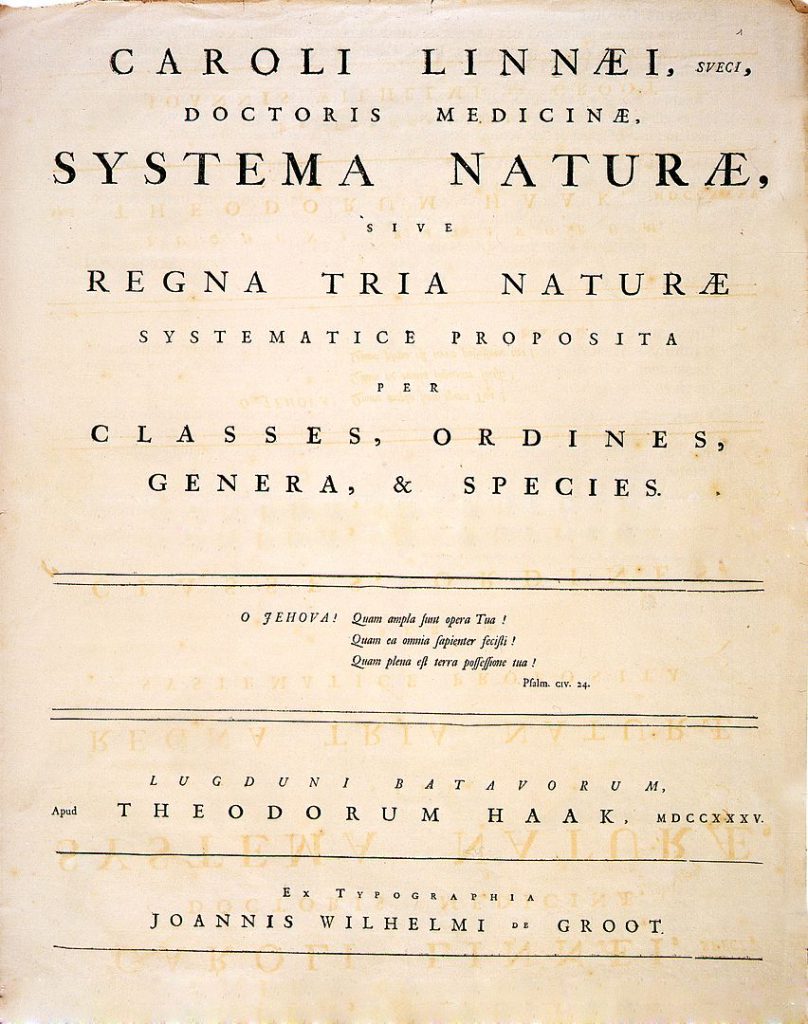How Scientific Taxonomy Constructed the Myth of Race

As a graduate assistant in biological anthropology at the University at Buffalo, I was tasked with curating the primate skeletal collection. The collection of skeletons—taken from cadavers studied during a primate anatomy class—had been neglected for a few years. Most of the specimens had lost their labels. So, when I began re-cataloguing the collection in 2016, I ran into trouble.
I knew that the skeletons were from three different species of macaques, but I didn’t know how to tell them apart, given that most research tends to focus on skeletal variation at a higher taxonomic rank, like genus or family. I wondered if one species had an anatomical feature that others did not which had been overlooked by previous scientists.
This project ended up becoming the topic of my dissertation. I started reading everything I could about macaque skeletons, taxonomy, and evolution. I also found myself gravitating toward books and papers on the history of taxonomy as a science.
The field of taxonomy, historically, is dominated by one man: Carl Linnaeus. Often called “The Father of Taxonomy,” Linnaeus invented binomial nomenclature, the formal system used to classify the natural world. The creation of this system, which is still used today, has made him one of the most influential people in history. Children often learn Linnaean taxonomy in school and grow up thinking that this ordering system is objective and neutral.
But, in my research on the history of taxonomy, it became apparent that while Linnaeus did play a crucial role in creating a formalized system to classify the natural world, this system left damaging effects. Aside from what historians today see as his Eurocentrism and sexism (see, for example, his snubbing of Jane Colden, a pioneering botanist), he promoted deeply misguided theories regarding human variation. These views effectively laid the groundwork for scientific racism—the pseudoscientific idea that racism can be justified with empirical evidence.
These completely faulty ideas continue to shape how some people think about race today—as a biological fact rather than as a social construct. Where did these ideas come from, and how did they become so central to science?
Linnaeus is a big part of the answer to that question.
Like many men in 18th-century Europe, Linnaeus was groomed for a career in the Protestant church. Though he ended up becoming a botanist rather than a clergyman, his scientific theories were guided by religious teachings. During his time as a student at Uppsala University in Sweden, Linnaeus sought to develop a more organized classification system for plants than what existed at the time.
He was inspired by Aristotle’s work theorizing a hierarchical ladder (Latinized to scala naturae, later called the Great Chain of Being) where all matter and living organisms were arranged on a continuum based on advancement, with humans at the top followed by other mammals, vertebrates, invertebrates, insects, plants, rocks, and minerals. Medieval Christians added “spiritual beings” to the ladder, placing God at the top, followed by angels, humans, and so on.
This framework supported the popular European view of nature that separated humans from animals. Linnaeus, too, followed this logic in his classification scheme, deciding that the most natural scientific order was a hierarchical one, where organisms were ranked according to their intelligence, as he thought God intended.
In 1735, the first edition of Linnaeus’ Systema Naturae was published. The text presented a working classification of matter and living organisms, including humans. Linnaeus, following Aristotle’s idea that “man is animal,” created the class “Anthropomorpha,” which he subdivided into three genera: Homo (human), Simia (meaning ape and also some monkeys), and Bradypus (sloth). (Contrary to common lore, Linnaeus was not the first thinker to connect humans with apes. The 12th-century Muslim scholar Nidhami Arudi made similar links, but his work was often overlooked by Europeans and remains underrecognized today.)
This part of Linnaeus’ framework ended up being rather controversial; the idea that humans, apes, and sloths all belong in the same order went against church teachings. The pope forbade the use of his books, and Linnaeus was widely criticized. His peers mocked him for imagining himself “a second Adam,” in reference to the Biblical Adam, who is said to have named animals in the Garden of Eden.
Although many mocked him, some of his peers and students (called “Linnaeus’ apostles”) still considered him the foremost expert on botanical classification during his lifetime. However, shortly after his death in 1778, Linnaeus’ legacy was all but forgotten. This remained true until Swedish nationalism grew in the 19th century, and Linnaeus was reclaimed from history and became the country’s icon.
In the first edition, Linnaeus coined the term Homo and divided humans into four varieties: Europaeus albus (people from Europe), Americanus rubescens (people from the Americas), Asiaticus fuscus (people from Asia), and Africanus niger (people from Africa). (In science, genus and species names, such as Homo sapiens, are italicized; none of Linnaeus’ original classifications of humans are considered valid species names today, so they are not italicized here.)
The fact that there were four human varieties reflected a tendency within European natural philosophy to divide the world into sets of four: the four rivers in the Garden of Eden; the four (known) continents; the four universal elements (earth, air, fire, and water); and the four humors (blood, yellow bile, black bile, and phlegm) that governed human health.
Linnaeus saw a connection there—geography influenced climate, and together, climate and the humors provided an observable characteristic in humans: skin color. Thus, in the 10th edition of Systema Naturae (1758), Linnaeus formally made this connection, saying that people from Europe were governed by the humor white phlegm, so they had whitish skin, while people from the Americas were governed by the humor blood and had reddish skin.
These completely faulty ideas continue to shape how some people think about race today—as a biological fact rather than as a social construct.
In this edition, Linnaeus also replaced “Anthropomorpha” with “Primates” and named humans Homo sapiens, revising his taxonomic definition of the species. He changed the names of the varieties to Homo americanus, Homo europaeus, Homo asiaticus, and Homo africanus. Linnaeus also suggested two new varieties: Homo ferus (wild children) and Homo monstrosus, or individuals he considered to be abnormally shaped by their environments, such as those from the high mountains (“Alpine dwarfs,” “Patagonian giants”), the “Hottentots,” and European women with artificially constrained waists.
Linnaeus based these varieties on physical characteristics such as skin color and hair color; geographic location; and perceived behaviors. For example, Homo americanus was defined as those with “straight, black, and thick hair; gaping nostrils … beardless chin” and “unyielding, cheerful, and free” behavior. Homo europaeus were those with “plenty of yellow hair; blue eyes” and were “light, wise, inventor[s].” Homo asiaticus had “blackish hair, dark eyes” and were “stern, haughty, greedy.” Homo africanus were those with “dark hair, with many twisting braids; silky skin; flat nose; swollen lips” and were “sly, sluggish, neglectful.”
In the first edition of Systema Naturae, “Europaeus” were classified at the top of the Homo hierarchy. Linnaeus later revised this, placing “Asiaticus” at the top. By the 10th edition, “Americanus” moved to the top, perhaps because he was guided by the idea of the “noble savage,” which, in the 18th century, was used to describe Indigenous people who were “free from sin, appetite, or the concept of right and wrong.”
Notably, “Africanus” continually remained at the bottom of the hierarchy, and Linnaeus’ description of “Africanus” was the most detailed, and the most negative. Around the same time that Linnaeus was writing, Sweden was involved in the enslavement of Africans, and therefore it would have been in the country’s interest to portray Africans as inferior.
The fact that Linnaeus aligned physical traits like skin color with variable characteristics such as behavior, clothing, and politics meant that he was not interested in identifying “discrete and stable types.” By this logic, Linnaeus did not directly suggest the existence of distinct human “races.” Importantly, the concept of “race” as meaning the division of humans on the basis of physical traits was not apparently used in the 18th century. However, the 1792 English translation of Systema Naturae presented Linnaeus’ human varieties as “subspecies,” which likely led to the later assumption that Linnaeus himself believed in human races.
Regardless, it is fair to say that, as the first serious attempt to subdivide humans into categories globally, Linnaeus’ formalized system of ordering and ranking humans later led to racial categories.
History has shown that these ideas were picked up by eugenicists such as German biologist Ernst Haeckel in the 19th century. Haeckel divided humans into 12 hierarchical species and 36 races, with the “Mediterranese” (specifically, the “Indo-Germanians”) ranked the highest and groups that made up “Primaeval Man” (Indigenous peoples in Africa and Oceania) ranked the lowest. He used physical but also cultural traits, such as language, to both define these “races” and make claims about their evolution (noting which ones were more or less evolved).
These ideas, combined with Haeckel’s social Darwinist belief that evolution ruled human civilization and nature, may have helped shape the racist ideologies of some Nazi organizers. Alfred Rosenberg (who was appointed leader of the Nazi movement by Adolf Hitler after he was jailed in 1924 for an attempted coup) reportedly read and was influenced by Haeckel’s ideas. Similarly, his ideas are thought to have helped stimulate the birth of fascism in Italy and France.
Of course, Haeckel is not the only one who used Linnaean teachings for this purpose. There are numerous examples of others (mostly men in Europe and the U.S.) who used these ideas about human variation to promote and advance scientific racism.
Linnaeus surely remains an important historical figure, and his taxonomic ideas will likely continue to be taught in schools globally. However, it must be remembered that when his work is praised as a major scientific achievement, his deeply problematic legacy is also celebrated.
While it is true, as many scholars argue, that Linnaeus did not promote the idea of distinct human species, his concepts of human classification paved the way for pseudoscientific ideas about human biological diversity—the horrific consequences of which are still felt today.



































